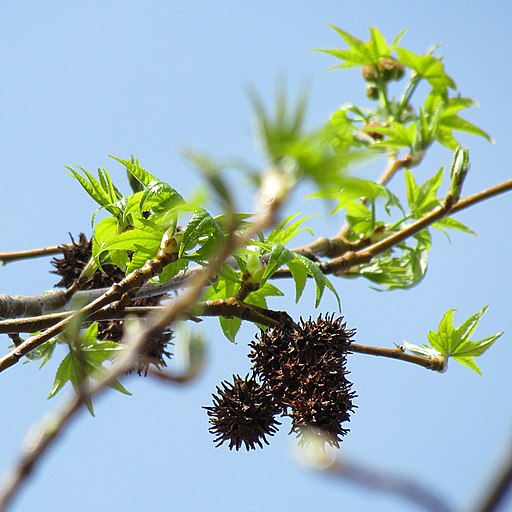Sweet gum (Liquidambar styraciflua)
Description
Sweet gum is a large deciduous tree found in wet river bottoms and swamps and dry upland areas. It has palmately lobed leaves with five tips and serrated edges in an alternate arrangement; the leaves offer showy colors in fall. Sweet gum produces small yellowish-green flowers in spring that lead to gum balls,spiny ball-like fruit containing winged seeds that appear in fall and winter. It produces a fragrant gum that seeps from the tree when damaged.
Gardening Tips
| Care | Known Problems | How to Harvest | Mature Size | Notes/Uses |
|---|---|---|---|---|
| Plant in spring in acidic or neutral well-drained soil; It prefers full sun or partial shade | Pests and diseases include webworms, caterpillars, borers, leaf spots, cankers, and wood rot; Yellowing occurs in alkaline soils; Gum balls are a nuisance to some homeowners; Sweet gum roots can damage paved surfaces if planted too near them | n/a | Up to 100 feet in height and 50 feet in diameter | Sweet gum trees offer food and habitat to some moth larvae; Birds eat the seeds and small mammals eat the bark; Sweet gum trees are used for lumber, furniture, veneer, and musical instruments; The gum can be used for chewing gum, incense, perfumes, and traditional treatments for ailments such as diarrhea |



